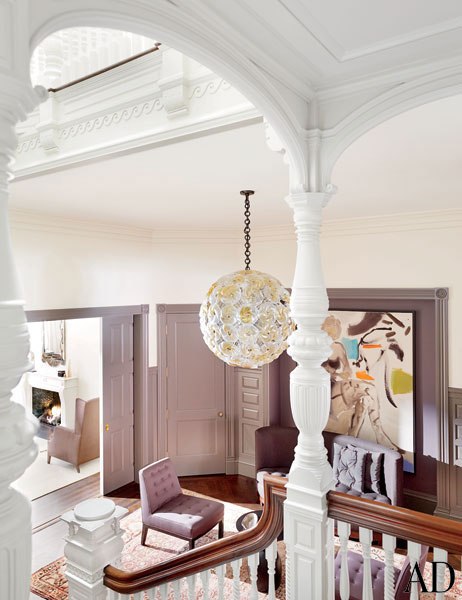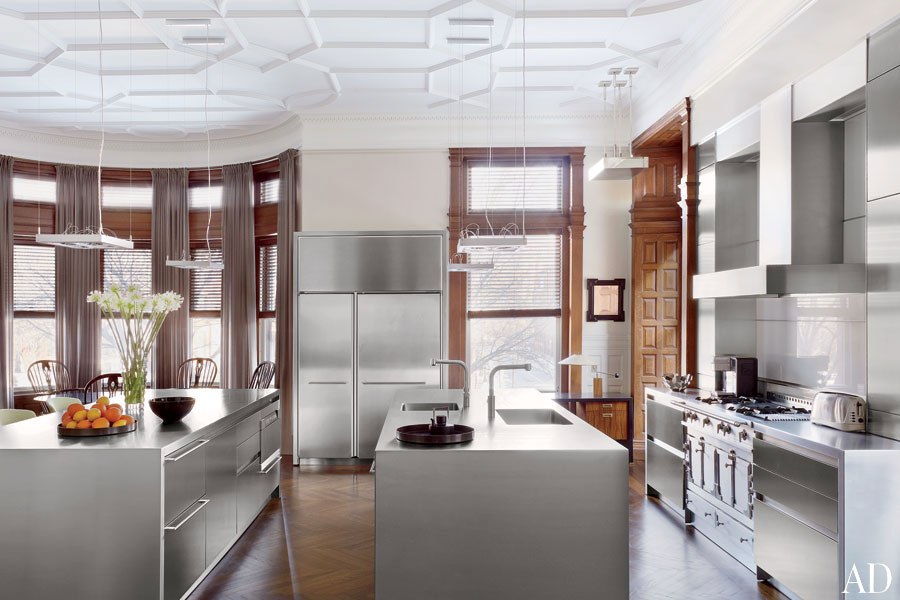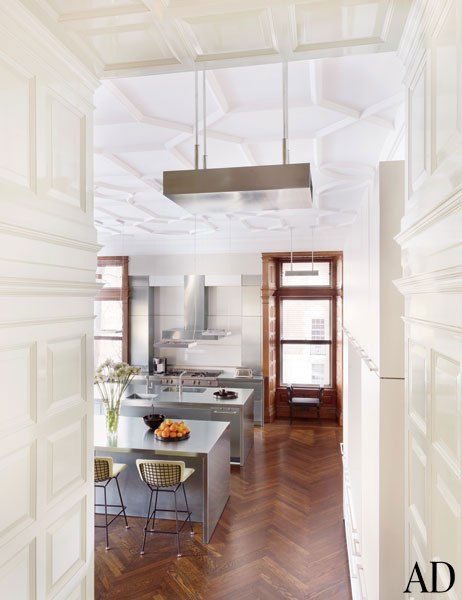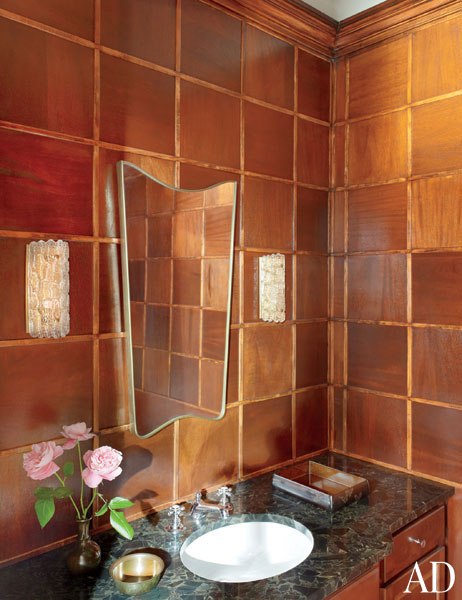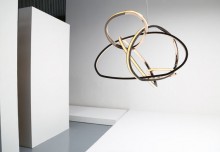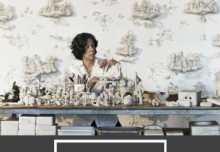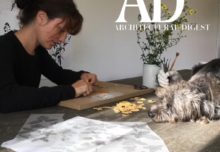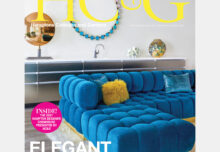Architectural DigestBoston UncommonOctober 2013

FORMAL ENTRY
An Eduard Wimmer-Wisgrill cabinet from Todd Merrill Antiques anchors the formal living room of a Boston residence renovated by architect Dell Mitchell and decorated by Thad Hayes, who also designed the settees and cocktail tables; the wall color is a custom-blended Donald Kaufman white. For details see October Sources.
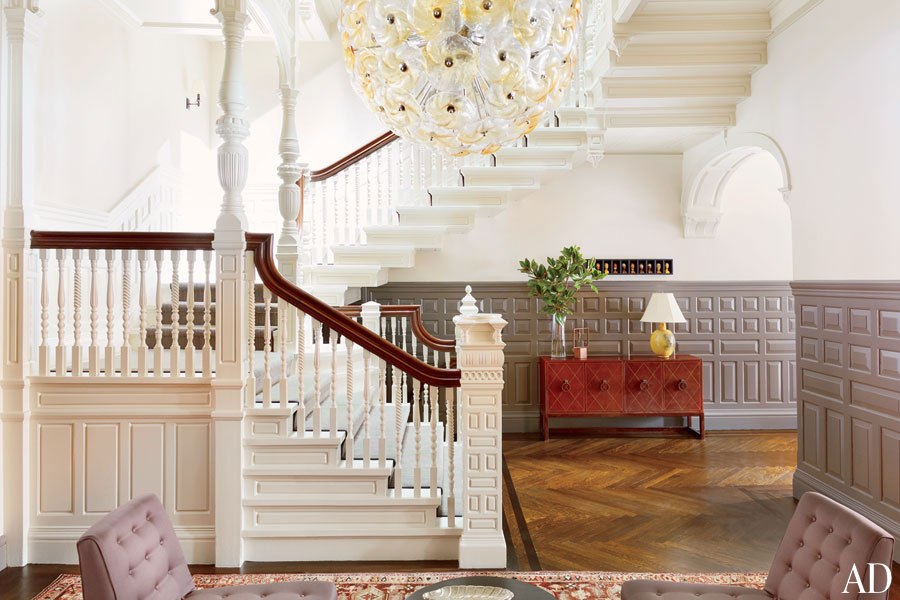
ONLINE EXCLUSIVE – ENTRANCE HALL
A 1960s Italian chandelier from Galerie Van den Akker presides over an entrance hall.
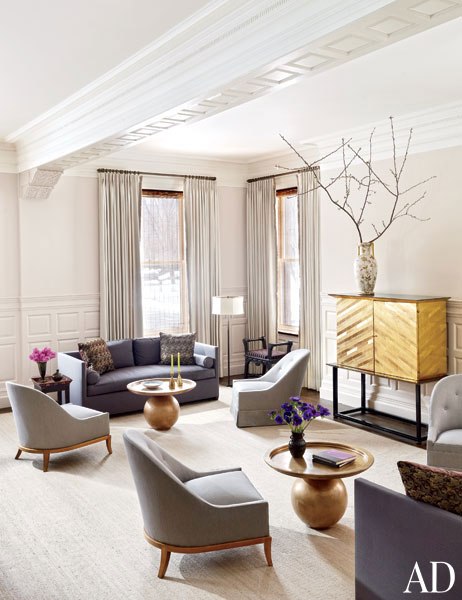
FORMAL LIVING ROOM
The main entry is illuminated by a 1960s Italian chandelier from Galerie Van den Akker; the Hervé Van der Straeten table is from Ralph Pucci International. For details see Sources.

FORMAL LIVING ROOM
In the living room, a 1950s Bjørn Wiinblad chandelier hangs above a Philip and Kelvin LaVerne cocktail table from Donzella 20th Century Gallery and bespoke club chairs by Hayes clad in a Clarence House linen; the mirror over the fireplace is ’60s Danish, the oak-and-tapestry armchairs by the window are ’30s Jacques Adnet designs, and the table lamp is by Deborah Czeresko. A pair of T. H. Robsjohn-Gibbings chairs stand in the foreground, the cloisonné tray tables are from H. M. Luther, and the sisal was custom made by Beauvais Carpets.

PARLOR
A Sophie von Hellermann painting faces a Chesney’s mantel in the parlor; the custom-made sofa is joined by ’50s Stilnovo table lamps and ’40s wing chairs.
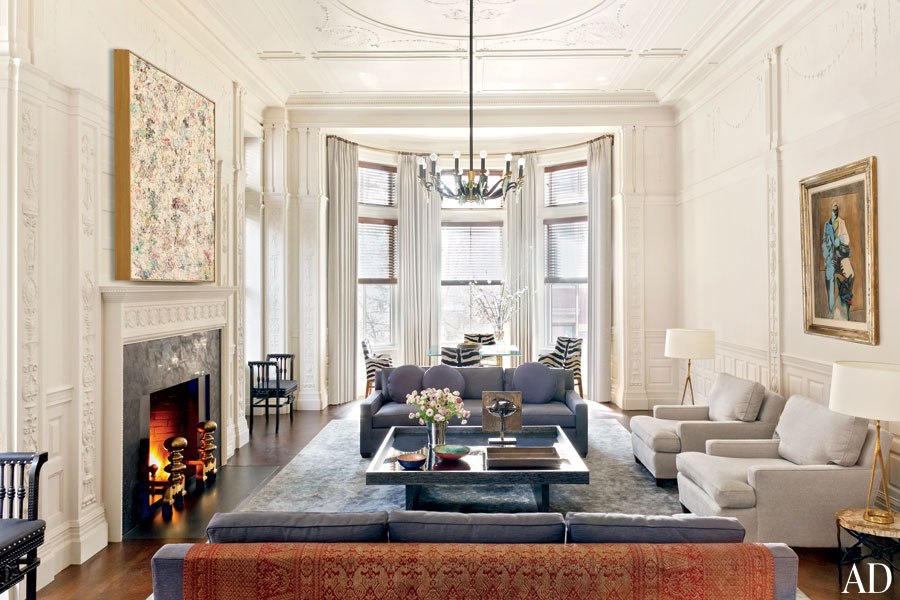
SITTING ROOM
A sitting room features a Dan Rees artwork (left) as well as a Hayes-designed cocktail table, club chairs (in a Classic Cloth textile), and sofas (in a Great Plains fabric); in the background, curtains of a Cowtan & Tout fabric complement vintage Wormley chairs upholstered in a Clarence House silk.

DINING ROOM
George III chairs clad in a Larsen silk surround the custom-made table in the formal dining room; the sideboard is by Jean Royère, the chandelier, sconces, and candlesticks are by Wiinblad, and the Art Nouveau vases are from Bernd Goeckler Antiques.
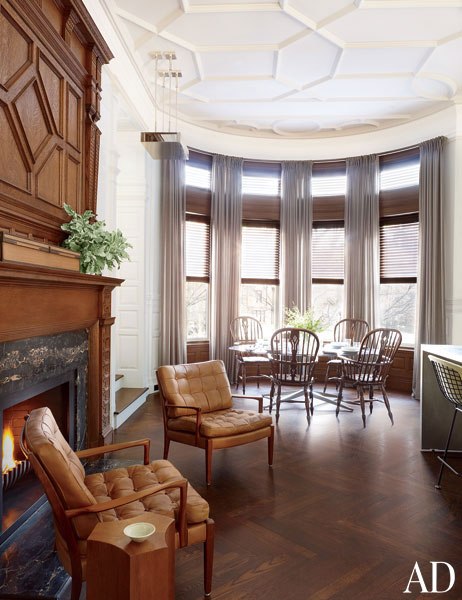
KITCHEN DINING AREA
Curtains of a Great Plains fabric frame the windows in the kitchen’s dining area; the dining table is by Knoll, and the midcentury lounge chairs are Swedish.
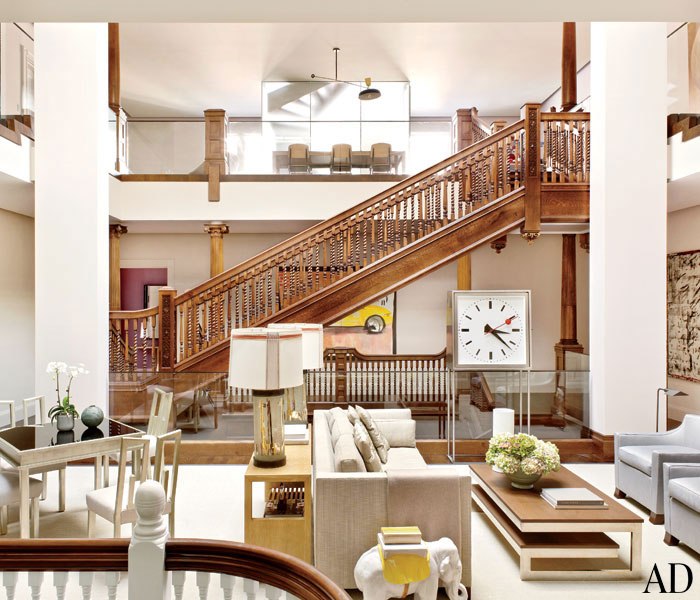
CENTRAL ATRIUM
A 1950s French train-station clock from Bourgeois Bohème stands beneath the original 1880s staircase in the central atrium. The table and chairs at left are vintage James Mont, the Hayes-designed sofa is upholstered in a Great Plains fabric, the vintage cocktail table is from Jean de Merry, and the sisal is by Beauvais.

LANDING
On a landing, a 1970s Charles Paris light fixture is suspended above a table by Hayes and Aesthetic Movement chairs; the large bronze water bowl is Japanese.

LIBRARY
In the library, André Dubreuil lanterns top the mantel; the ceiling fixtures are 1960s Seguso, the Edward Wormley sofas are covered in a Larsen fabric, and the pillows are made of a Donghia textile.
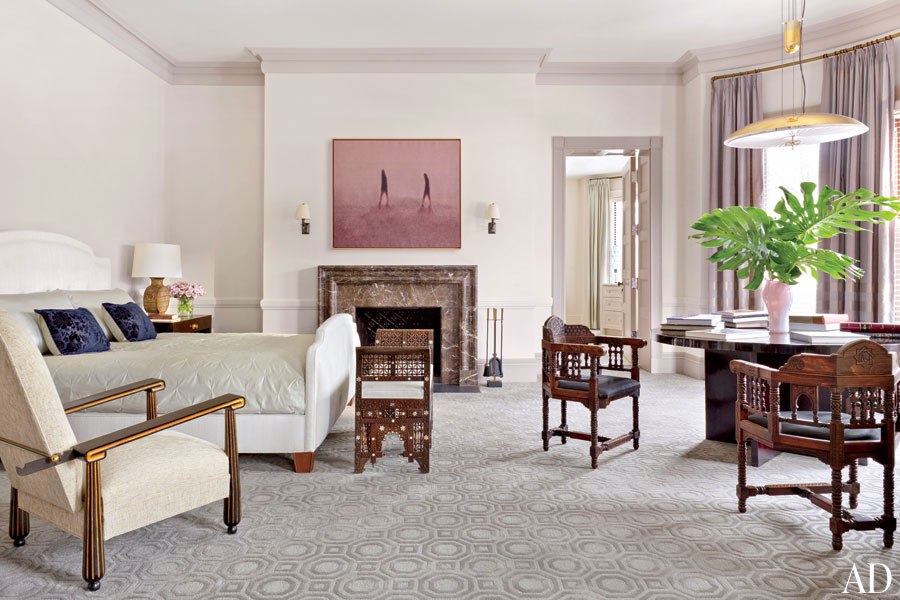
MASTER BEDROOM
In the master bedroom, a 1950s Austrian pendant light from Eric Appel is juxtaposed with late-19th-century Moorish chairs and a 1920s armchair attributed to Paul Poiret’s Atelier Martine from Bernd Goeckler Antiques; the carpeting was custom made by Tai Ping
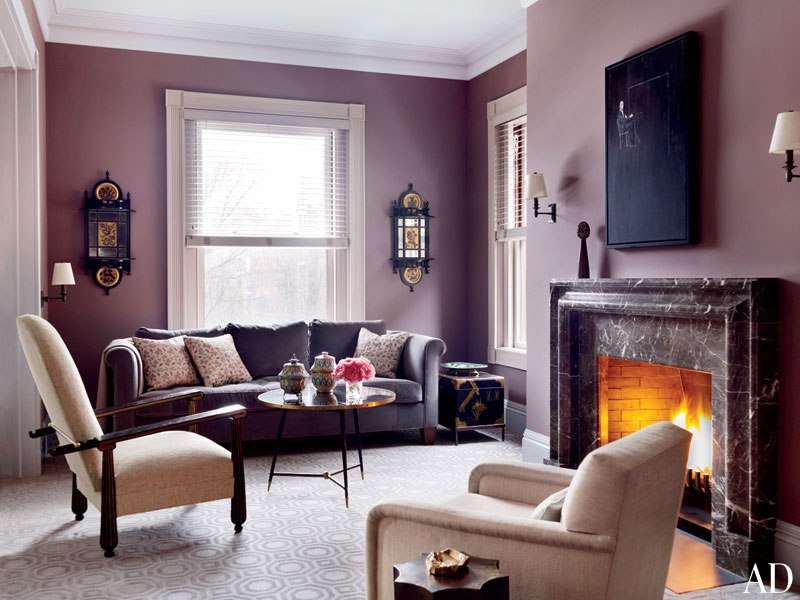
MASTER SITTING AREA
The master sitting area includes a 1950s cocktail table attributed to Jules Leleu from Maison Gerard.
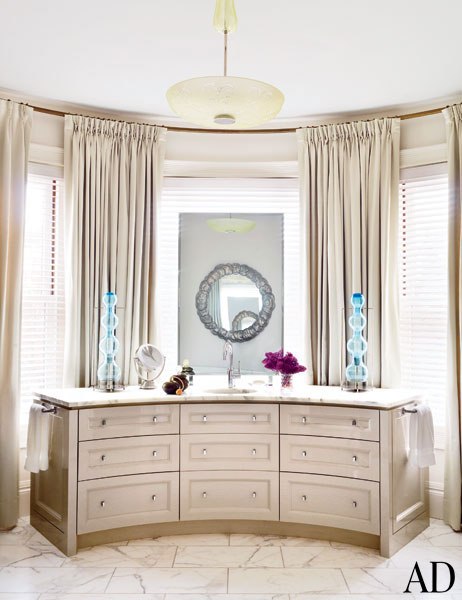
MASTER BATH
Curtains fashioned of a Brunschwig & Fils satin grace a master bath; the mirror is vintage FontanaArte, and the sculptural lamps are 1960s Venini from Dana John.
Todd Merrill Studio
80 Lafayette Street
New York NY 10013
Phone: 212 673 0531
80 Lafayette Street
New York NY 10013
Phone: 212 673 0531
Todd Merrill Summer Studio
11 South Main Street
Southampton, NY 11968
Phone: 631 259 3601
11 South Main Street
Southampton, NY 11968
Phone: 631 259 3601


